Key takeaways:
- Art therapy enhances emotional well-being through creative self-expression, helping individuals process complex emotions and improve mood.
- Engagement in art fosters healing by facilitating emotional release, self-discovery, and improved mindfulness, while also serving as a means to build connections with others.
- Long-term benefits of art therapy include increased resilience, enhanced self-esteem, and a strengthened sense of community through shared artistic experiences.
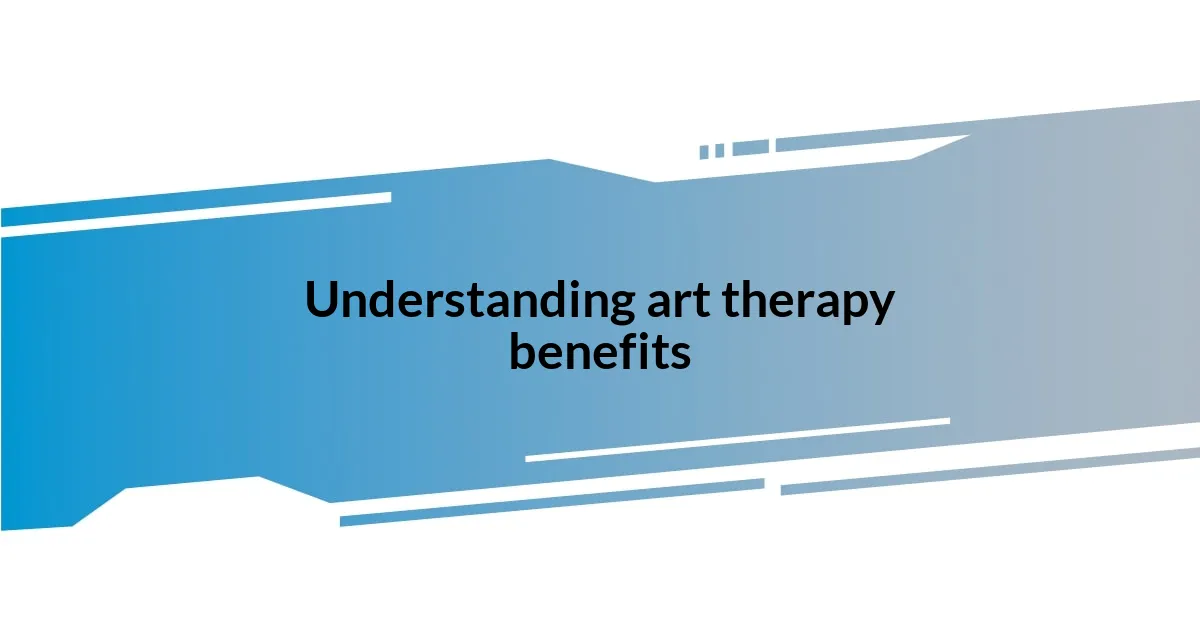
Understanding art therapy benefits
Art therapy offers a unique avenue for self-expression that can greatly enhance emotional well-being. I remember a time when I participated in a group session; the warmth of the paint on my fingers and the vibrant colors surrounding me created a safe space to explore feelings I often found hard to articulate. Isn’t it fascinating how visual elements can sometimes communicate what words cannot?
One of the standout benefits I’ve observed is the ability to process complex emotions. There was a moment when I felt overwhelmed by stress, and channeling that into a piece of art helped me uncover deeper layers of my feelings. It made me wonder, how many of us are sitting on a treasure trove of emotions waiting to be expressed in creative ways?
Additionally, art therapy has been shown to improve mood and reduce anxiety. The rhythm of brush strokes or the act of shaping clay can serve as a form of mindfulness, pulling us into the present moment. Have you ever noticed how engaging in creative activities can shift your mindset? I’ve found that immersing myself in art not only calms my mind but also ignites a sense of joy and connection with others in the process.
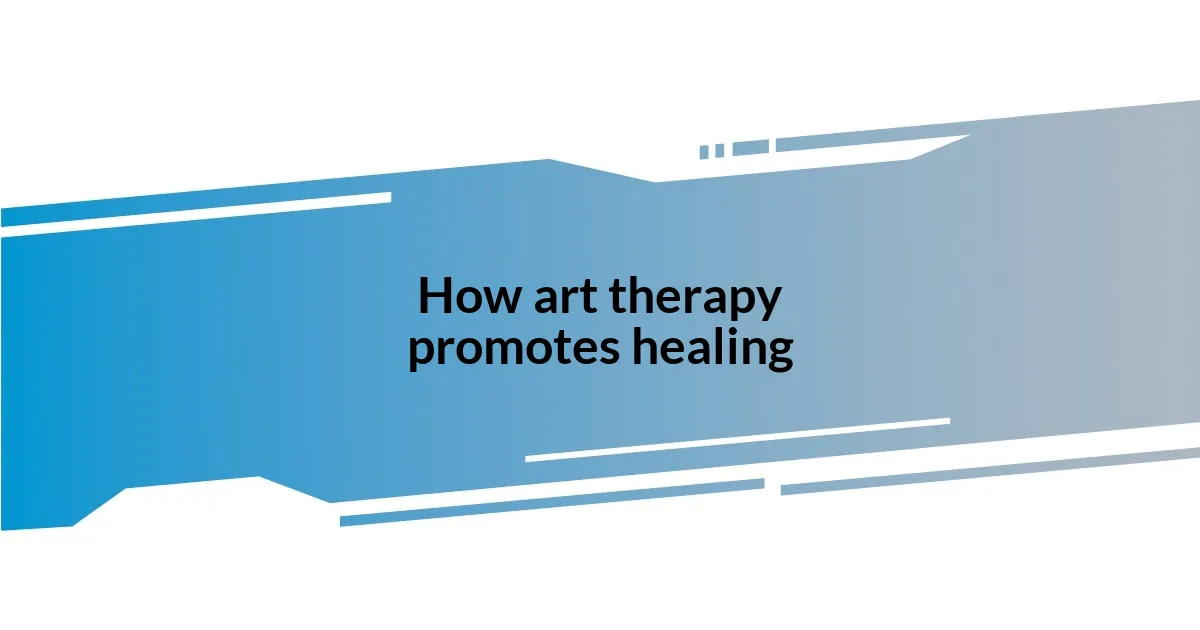
How art therapy promotes healing
Engaging in art therapy can significantly promote healing by facilitating emotional release. I recall a session where I let my emotions flow onto the canvas, transforming my worries into swirls of color. This act of creation became a powerful catharsis, allowing me to release pent-up feelings I hadn’t even realized were there. It struck me how art can act as a mirror, reflecting our inner turmoil and revealing paths to healing.
Here are some ways art therapy fosters healing:
- Emotional Expression: It provides a safe outlet for emotions that may be difficult to verbalize.
- Self-Discovery: Creating art often uncovers hidden feelings and insights about oneself.
- Stress Reduction: The act of creating can lower cortisol levels, promoting relaxation and a sense of peace.
- Enhanced Mindfulness: Focusing on the creative process encourages being present, alleviating anxiety.
- Improved Communication: Art can serve as a bridge for discussions about feelings, aiding in interpersonal connections.
By channeling emotions into creative expression, many find a tangible pathway to understanding and healing that complements other therapeutic methods.
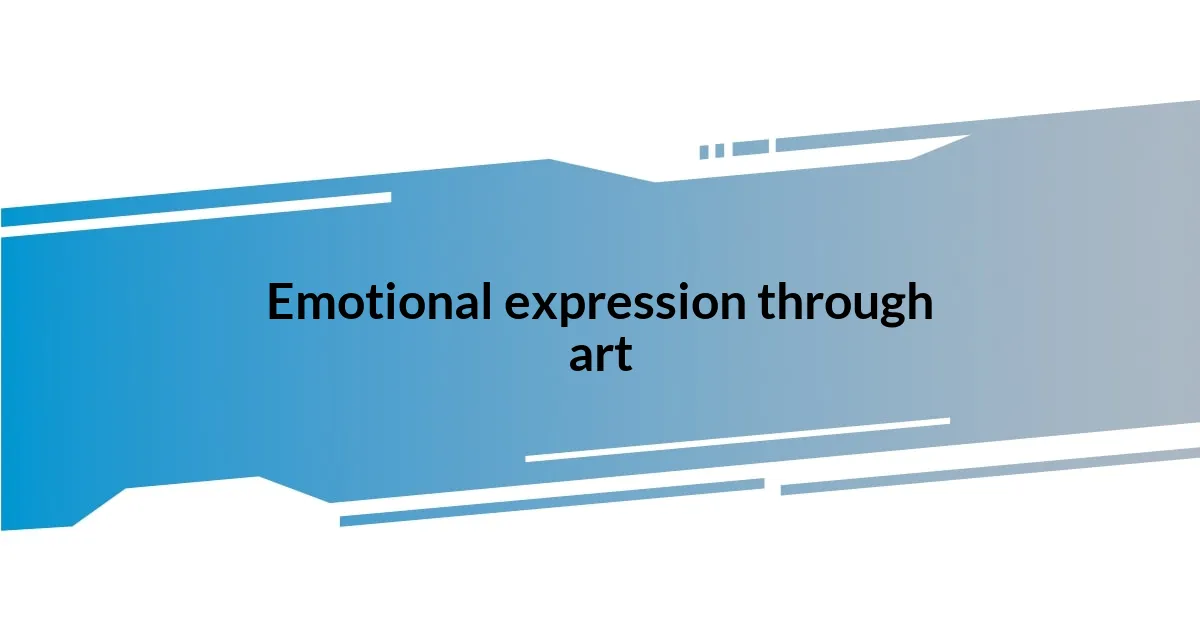
Emotional expression through art
Engaging with art allows for emotional expression that’s both freeing and revealing. I once created a collage during a particularly tough time—each torn piece represented a fragment of my feelings. As I layered them together, I felt a cathartic release. It’s astonishing how transforming chaos into imagery can clarify the chaos we often experience internally.
Art therapy doesn’t just provide an outlet; it can also serve as a bridge to understanding our emotions. I vividly remember using colors to depict my feelings about a challenging relationship. The choice of hues was telling; vibrant reds signified anger, while cool blues revealed my sadness. This visual exploration not only deepened my self-awareness but also highlighted how our emotions are often intertwined yet distinct.
In addition to personal insights, I’ve seen the power of art in connecting with others. In a group session, participants shared their artwork, forming bonds over common experiences. It struck me how one drawing could resonate with someone else’s story, creating a sense of community. Isn’t it incredible how art can foster connections and conversations that words often struggle to initiate?
| Emotional Expression | Examples |
|---|---|
| Cathartic release | Transforming emotions into visual art for clarity |
| Self-discovery | Using colors and shapes to understand complex feelings |
| Connection | Sharing artwork to build relationships and community |
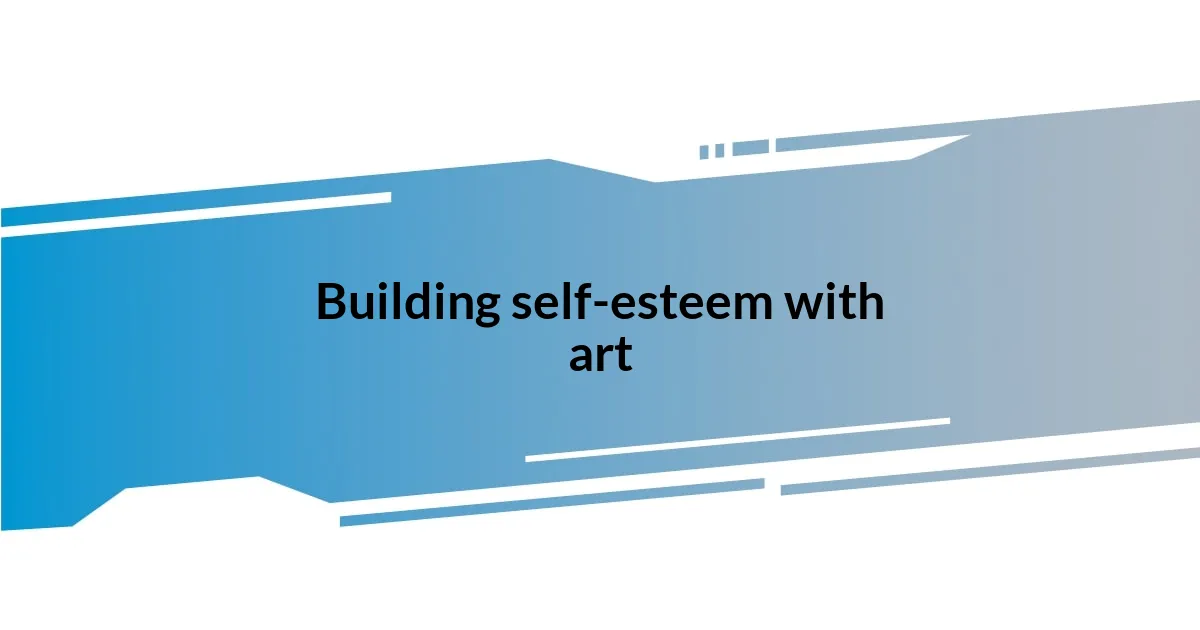
Building self-esteem with art
When I first picked up a paintbrush, I never anticipated the confidence boost it would give me. Each stroke felt like a step forward, revealing parts of myself that I deeply cherished. It’s fascinating how creating art can shift our perception of self; the simple act of expressing myself visually helped me recognize my potential, igniting a newfound belief in my abilities. Have you ever felt a sense of accomplishment from something you created?
During one of my art therapy sessions, we were encouraged to create self-portraits. Initially, I dreaded the thought, worried about how I might portray myself. However, as I sketched, I began to feel a sense of pride in my unique features—every imperfection became a story worth telling. This experience dramatically transformed my self-image; it was liberating to see myself through my own eyes instead of the lens of others’ opinions.
Moreover, sharing my artwork with others further enhanced my self-esteem. In a group discussion, I noticed how my peers responded positively to my piece, reinforcing that my expression was valued. It truly struck me how art can not only build our self-worth but also foster a sense of belonging and validation within a community. Isn’t it empowering to know that your unique voice, expressed through art, can resonate with others?
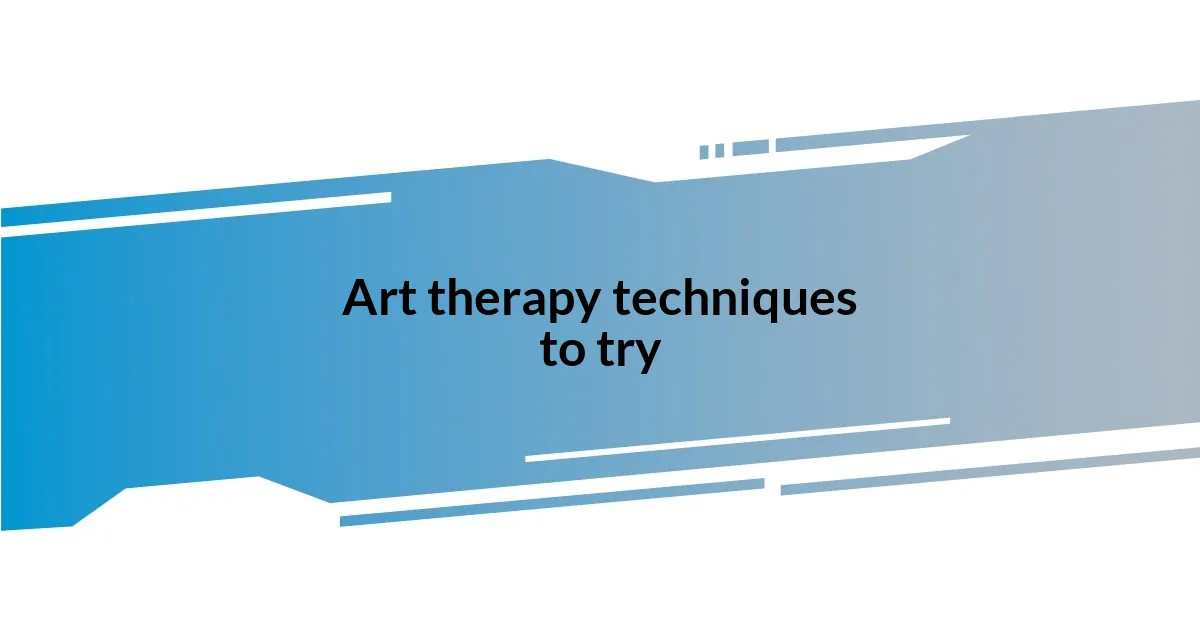
Art therapy techniques to try
There are numerous art therapy techniques that you can explore, each offering a unique pathway for creative expression. One technique I often find myself drawn to is mandala drawing. I remember the first time I filled in a circular design; it was mesmerizing and almost meditative. The intricate patterns allowed me to focus my thoughts and bring a sense of calmness to my day. Have you ever noticed how something as simple as filling in shapes can ground you in the moment?
Another approach worth trying is guided imagery combined with painting. In one session, after a calming visualization, I was asked to paint whatever came to mind. The experience was freeing! I allowed colors and forms to emerge without judgment, resulting in a vivid piece that mirrored my emotional landscape. It’s incredible how this technique can help tap into feelings we might not even realize are there. Have you ever allowed yourself to paint without any boundaries or expectations?
Lastly, consider integrating collage-making into your practice. I vividly recall creating a vision board, carefully selecting images and phrases that resonated with my hopes and fears. Each cut and paste became a step toward self-discovery. The act of choosing symbolically significant items helped me articulate desires that were often buried beneath layers of routine. Have you felt that rush of clarity when constructing something that visually conveys your innermost thoughts?
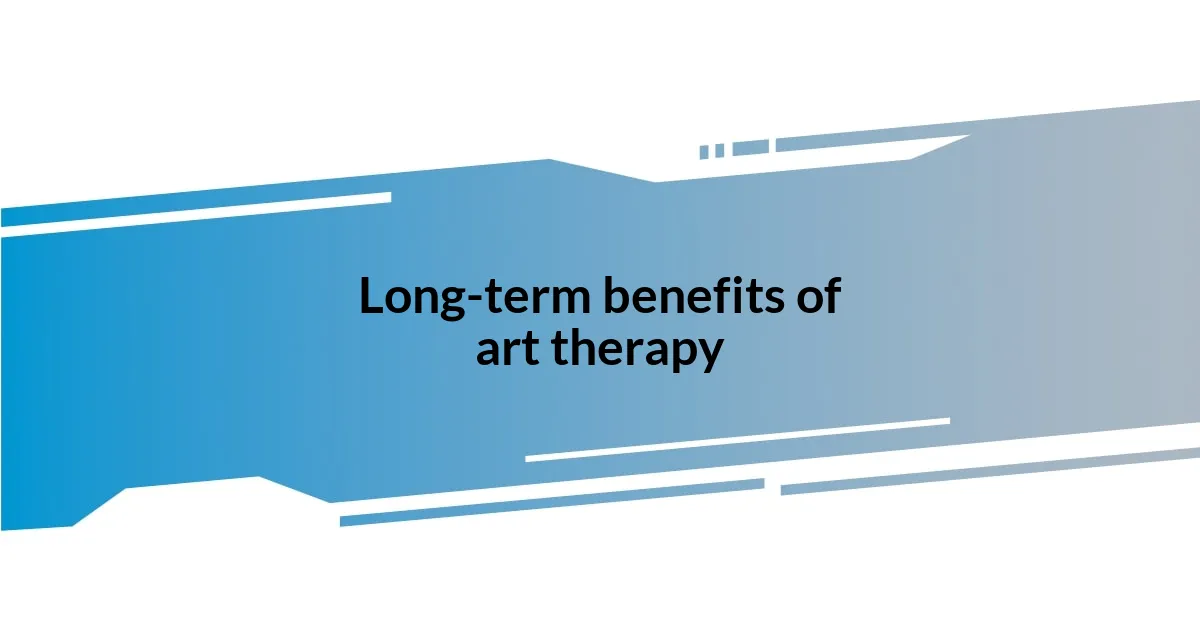
Long-term benefits of art therapy
Art therapy offers profound long-term benefits that extend well beyond our initial sessions. For example, I remember vividly how, over time, my anxiety regarding self-expression transformed into a comfortable familiarity with my own emotions. I used to shy away from uncomfortable feelings, but through art, I learned to confront and understand them instead. Have you ever noticed how a simple act of creation can unveil layers of emotional complexity within you?
Another noteworthy benefit is the resilience I developed. Creating art in moments of distress often became my refuge, allowing me to channel my feelings into something tangible. I recall a period when life felt overwhelming. I turned to painting to articulate my frustrations and fears. Surprised by the clarity I gained through each stroke of the brush, I found a renewed sense of strength and problem-solving capabilities. How empowering is it to realize that we can cultivate our own coping mechanisms through creative outlets?
Additionally, the social connections I formed through art therapy have been incredibly enriching. This collective journey of self-discovery created lasting bonds with fellow participants, leading to friendships rooted in shared experiences. I often reflect on our group sessions, where we exchanged artwork and emotions—it was heartening to witness how our vulnerabilities became a powerful source of support. Isn’t it fascinating how creativity can foster a sense of community, allowing us to grow together in our artistic journeys?
